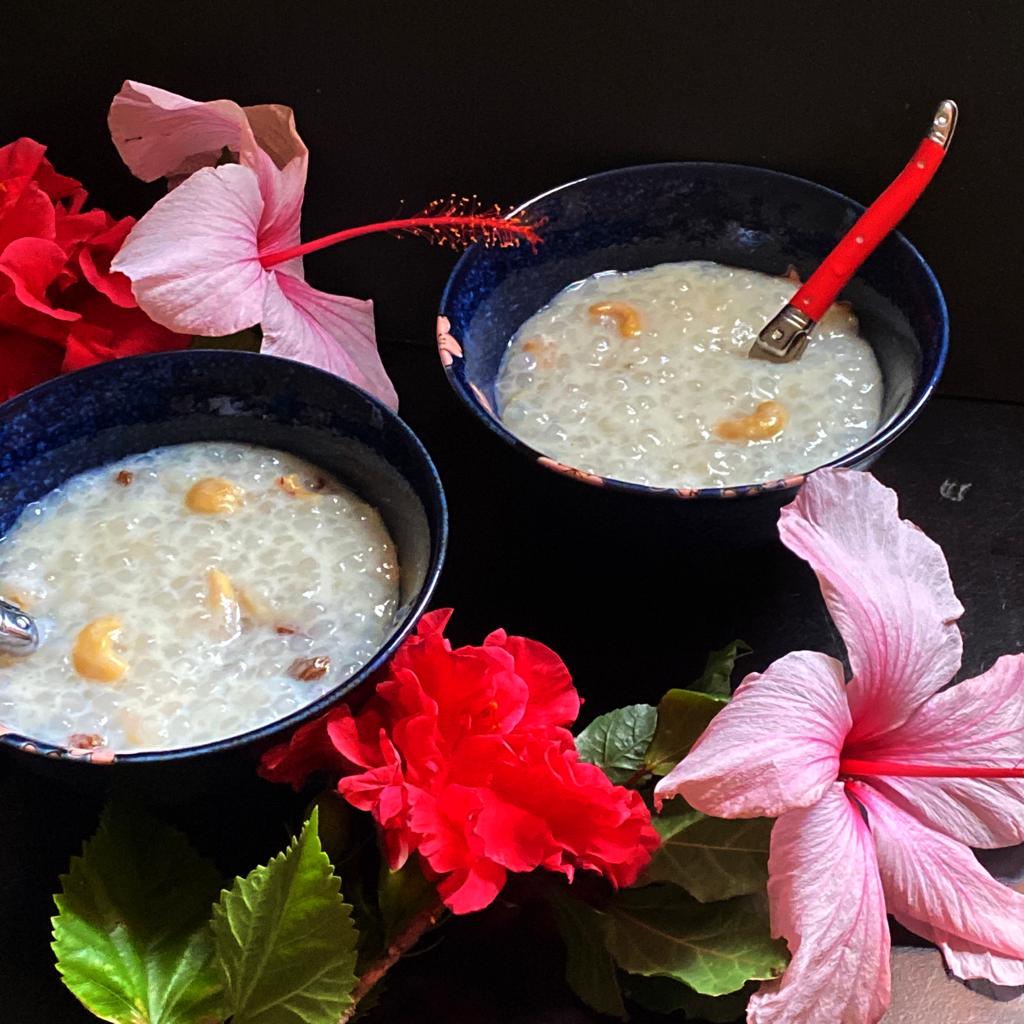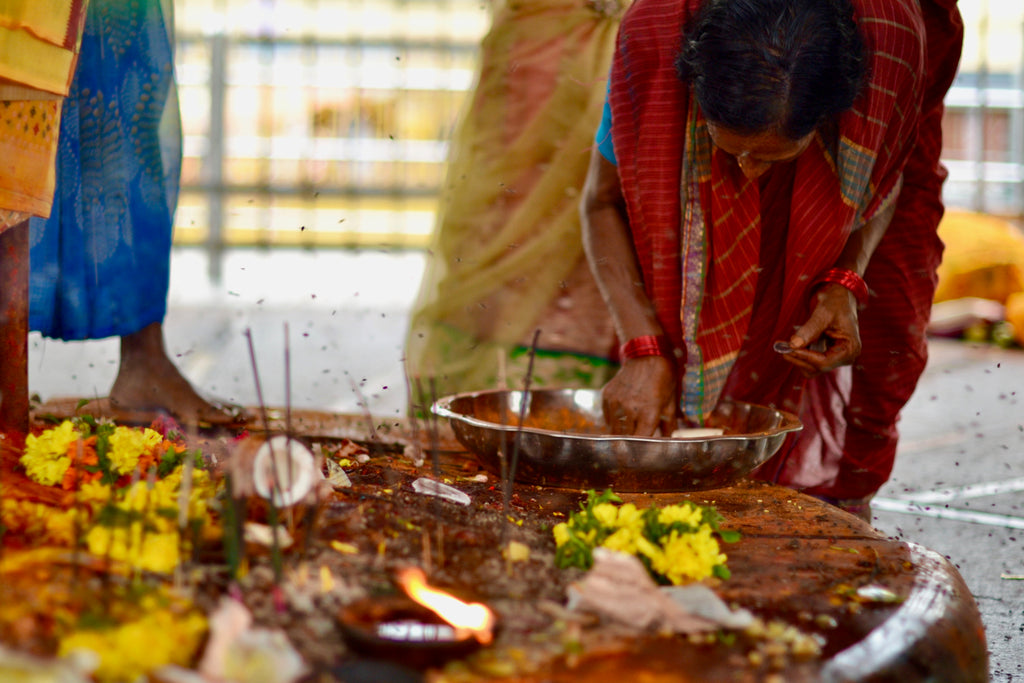Indian Festivals: Maha Shivratri - The Festival of Lord Shiva
By Conchita de Souza

Image: Sabudana Kheer is a pudding made from sago and can be consumed during fasts.
If you are not familiar with Hinduism and its many deities, it can be difficult to follow the elaborate and intricate mythologies and accompanying rituals that have developed over the millenia. Though I come from a strong Catholic upbringing, my time spent living in India as an adult as well as my practice of a classical Indian dance form (Kathak) have given me the opportunity to experience hindu traditions and learn about the customs, stories and practices that define it. From a very basic introductory level, the three Gods you might want to acquaint yourself with are Brahma (The Creator), Vishnu (The Preserver) and Shiva (The Destroyer), the last of whom this grand festival honours.
In Indian mythology, Lord Shiva is pictorially depicted as a muscular being with long flowing dreadlocks, the crescent moon on the side of his forehead and the third eye at its centre, a snake draped around his neck, a bare torso and his loins draped only with the skin of a tiger. He is depicted sitting in a meditative position, cross-legged with his four hands, two of which are held in mudra and the other two holding a trident (thrissur) in one hand and a percussion instrument (damaru) in the other. Aesthetics aside, Shiva is not so much a physical character as he is an all-pervasive energy and consciousness itself.

Image: A depiction of Lord Shiva (unknown)
Maha Shivratri literally means the Great (maha) Night (ratri) of Shiva and falls on the night before the new moon in Hindu month of Maagha or Phalguna (marking the start of springtime in the Northern Hemisphere). Like many grand festivals in India, it is celebrated in different ways according to the region and community and even the lore surrounding the origins of this festival differ. The underlying purpose of this festival is to honour, worship and rejoice in Lord Shiva.
The stories behind the origins of the festival include:
- The emergence of Shiva linga - Lord Shiva, at the request of the other gods, decided to humble Lord Brahma and Lord Vishnu who were arguing that each was the greatest of all gods. Shiva manifested as a great fire spreading across the universe. Brahma and Vishnu tried to find the ends of the fire with the former deity taking the form of the swan and trying to reach the top and the latter taking the form of the boar and ploughing through the earth. Brahma on his way up came upon a frangipani flower (ketaki) and when he asked where she came from she told him she was an offering from the pinnacle of the fiery column. Brahma stopped there and carried the flower as proof that he reached the summit. Shiva saw through the lies and punished Brahma so that he would not be worshipped by anyone.
-
The day that Lord Shiva performed his cosmic dance of creation, preservation and destruction. This dance is known as Tandavam and will be performed by classically-trained dancers at major Hindu temples across India (such as at Khajuraho in the central state of Madhya Pradesh).
- Lord Shiva’s union with Goddess Parvati whose devotion to him was pleasing and who is the avatar of the Goddess Shakti, representing the power to defeat evil.
- Lord Shiva is said to have saved the world by drinking a pot of poison when the oceans were being churned. Shiva never swallowed the poison but only held it in his throat which is why he is depicted as blue in colour.
Lord Shiva and Yoga
In the Yogic tradition, Lord Shiva is known as Adi Guru or Adi Yogi, which means that he was the first Guru from whom the science of Yoga originated and the first to practise Yoga. Those of you who practise yoga might be familiar with the position shavasana which is laying still, as though dead. Shava, lifelessness is the opposite of Shiva which embodies the potential for life. It is believed that on this auspicious day Lord Shiva, who had been in a state of meditation for millenia become completely and utterly still.
What happens on this day
Maha Shivratri is an auspicious time when the positioning of the northern hemisphere of the planet allows for human beings to experience a natural upsurge of energy. It is therefore a time of prayer, meditation and fasting.
A devotee would start the day with a sunrise dip in the holy river Ganga (or a shower/bath for those who are not able to bathe in the river) and put on fresh and clean clothes. They would proceed to a temple to offer a pooja (prayer) that involves a specific ritual of bathing Shiva’s linga in milk and/or water. The linga ritual will happen every 3 hours and the statue is bathed in natural items including that of milk, honey, yoghurt, sandalwood paste and rosewater.
Most devotees would observe a complete fast throughout the day (no food or water), or, if eating, would consume light meals such as fruit, milk and certain vegetables and non-grain items. Spices are restricted to jeera (cumin), pepper, green cardamom, cinnamon and ajwain. Salt is avoided and instead black salt is used. Vrat foods such as sabudana khichdi (a dry risotto made from sago) and sabudana kheer (sago pudding) can be consumed, but usually only after the evening prayer.
In the evening the prayers continue and devotees will meditate, recite vedic mantras and chant hymns as well as offer seasonal fruit to Shiva. They keep vigil throughout the course of the night until dawn the next day when they will break their fast eating prasad (the food offerings made to the gods).

